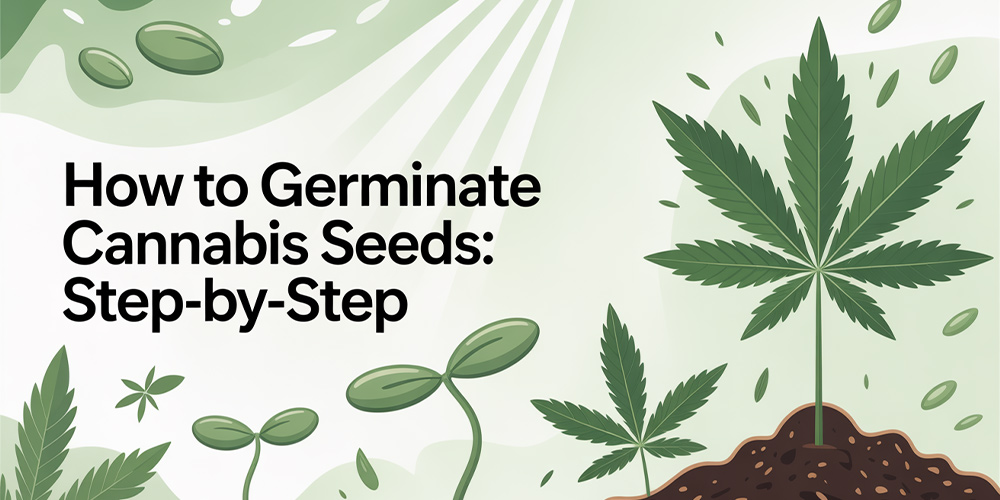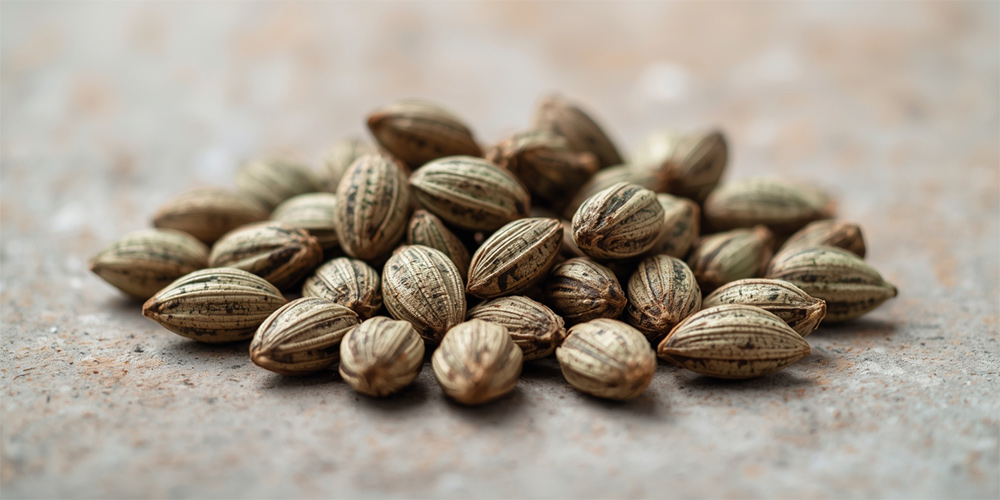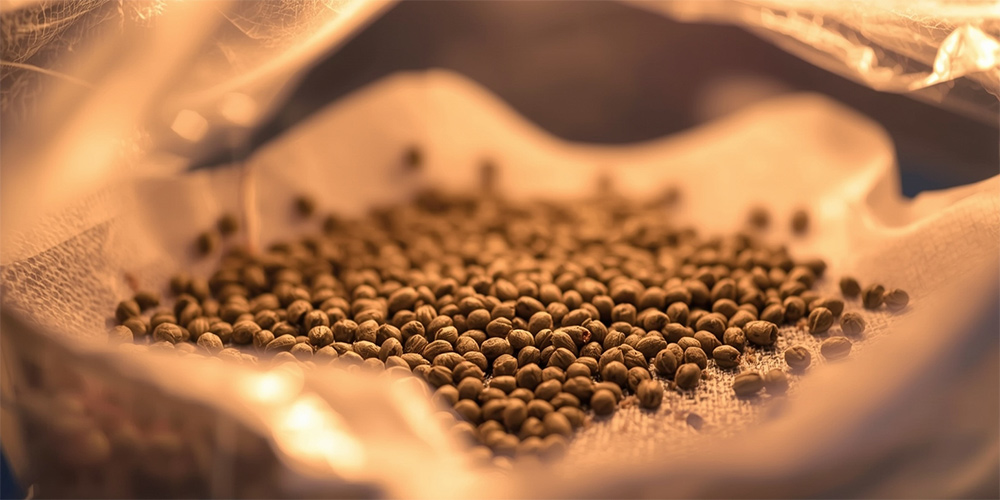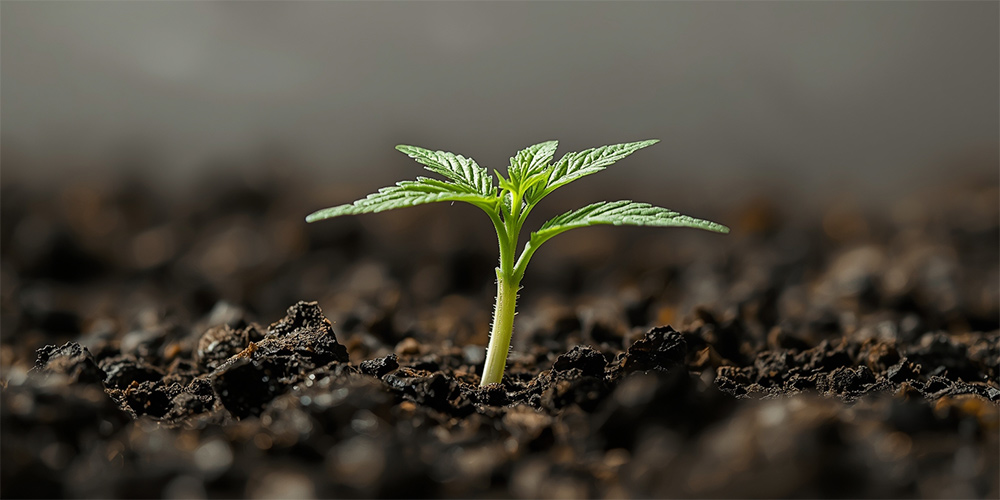
Home » How to Germinate Cannabis Seeds: Step-by-Step
How to Germinate Cannabis Seeds: Step-by-Step
The first step in growing strong cannabis plants is successful germination. Germination is the process where a seed awakens from dormancy, absorbs water, and pushes out its first root, known as the radicle. Without healthy germination, even the best genetics will fail to reach their potential.
This guide will walk you through the biology of cannabis seed germination, preparation steps, and five proven methods — from the classic paper towel technique to advanced laboratory-inspired approaches. You’ll also learn the ideal conditions, troubleshooting solutions, and legal considerations in Australia.
⚠️ Important Note: In Australia, germinating cannabis seeds without the appropriate licence is illegal, except for approved industrial hemp cultivation. This article is for educational purposes only.
Understanding Cannabis Seed Germination
At its core, seed germination is a biological awakening:
- Imbibition: The dry seed absorbs water, swelling and softening its protective shell.
- Metabolic activation: Stored food reserves activate, fueling growth.
- Radicle emergence: The first root (radicle) breaks through, seeking oxygen and moisture.
- Seedling formation: Cotyledons (seed leaves) appear, beginning photosynthesis.
Key Takeaway: Cannabis seeds need three essentials to germinate successfully — moisture, warmth, and oxygen. Too much water cuts off oxygen, while too little prevents activation.
For a deeper dive into the biological process, see our related article: How Do Cannabis Seeds Germinate? The Science Explained.

Preparing Seeds Before Germination
Choosing Viable Seeds
Healthy seeds tend to be:
- Dark brown or mottled with a waxy sheen
- Firm to the touch, not soft or cracked
- Medium to large in size (though genetics vary)
Proper Storage
Until germination, keep seeds:
- In a cool, dark place (6–10°C is ideal)
- Inside an airtight container with silica gel
- Away from direct sunlight and humidity
Pre-Treatments for Difficult Seeds
- Soaking in water (12–24 hours): Helps soften the shell.
- Scarification: Lightly nicking or sanding the seed coat to aid water penetration.
- Hydrogen peroxide rinse: A 1% solution reduces mold risk and can stimulate germination. A 2021 study published in Plants by Sorokin and colleagues found that cannabis seeds treated with low-concentration H₂O₂ showed significantly faster germination rates.

Step-by-Step Germination Methods
1. Soaking Method (Water Glass)
Materials: Clean glass, filtered water
- Fill a glass halfway with room-temperature water.
- Drop seeds into the water; they may float initially.
- Remove and plant seeds once they sink or after 24–48 hours.
Pros: Simple, quick hydration
Cons: Seeds left too long risk drowning or mold
2. Paper Towel Method
Materials: 2 paper towels, sealable plastic bag, spray bottle
- Moisten paper towels — damp, not dripping.
- Place seeds between the layers.
- Seal inside bag, leaving small air pockets.
- Keep warm (21–26°C) and dark.
- Check daily; transplant once roots reach ~1 cm.
Pros: Easy monitoring, widely used
Cons: Roots can grow into paper and be damaged during transplant
3. Direct Planting in Soil or Coco
Materials: Small pots with light, airy medium
- Make a 1–2 cm deep hole.
- Place seed taproot down.
- Cover lightly and mist with water.
- Keep warm and slightly moist.
Pros: No transplant shock, natural process
Cons: Cannot check progress without disturbing soil
4. Starter Cubes / Rockwool / Peat Pellets
Materials: Cubes or pellets, water
- Moisten the cube until evenly damp.
- Insert seed about 1 cm deep.
- Place cubes in a propagation tray with dome.
- Maintain humidity and warmth until sprouting.
Pros: Clean and controlled, easy transplant to hydro or soil
Cons: Rockwool requires pH adjustment; pellets can dry quickly
5. Advanced: Hydrogen Peroxide Method
Based on research conducted at the University of Minnesota in 2021, seeds exposed to a 1% hydrogen peroxide solution had germination rates above 80% within one day.
Materials: 1% hydrogen peroxide solution, sterile container
- Soak seeds for 12–18 hours.
- Rinse with clean water.
- Transfer to soil or cubes immediately.
Pros: Rapid germination, reduces fungal risk
Cons: Requires careful handling of solution
Comparison of Germination Methods
| Method | Ease | Germination Speed | Success Rate | Risks |
| Soaking | ★★★ | Moderate | Medium | Drowning seeds |
| Paper Towel | ★★★★ | Fast | High | Root damage, mold |
| Direct Soil | ★★★ | Slow-moderate | High | No progress visibility |
| Starter Cubes | ★★★★ | Fast | High | Drying out, pH issues |
| H₂O₂ Method | ★★★ | Very fast | Very high | Requires precision |

Optimal Germination Conditions
- Temperature: 21–26°C (room temperature is sufficient for most homes)
- Moisture: Consistently damp but never waterlogged
- Airflow: Small air gaps to prevent mold growth
- Light: Germination itself happens best in darkness, but seedlings need light once cotyledons emerge
- Water Quality: pH around 6; filtered water preferred
Transplanting Germinated Seeds
- Wait until the root is ~1 cm long.
- Handle gently with tweezers or gloved fingers.
- Place taproot down, 1–2 cm deep into medium.
- Keep medium moist and warm for smooth transition.
Troubleshooting & Special Cases
- Seeds not germinating: May be immature, old, or improperly stored. Try scarification or a peroxide soak.
- Helmet head (seed shell stuck): Mist lightly and gently nudge with sterile tweezers.
- Roots stuck in paper towel: Wet the towel before removing to avoid tearing roots.
- Old seeds: Scarify, soak, or use gibberellic acid (GA₃) to stimulate.
For a detailed breakdown of common errors and how to avoid them, read our guide: Common Cannabis Seed Germination Mistakes to Avoid.
Legal and Safety Considerations in Australia
In Australia, germination of cannabis seeds is tightly regulated:
- Medicinal cannabis: Requires a licence from the Office of Drug Control.
- Industrial hemp: States may permit licensed cultivation of hemp with <1% THC.
- Personal germination: Illegal without licence — penalties vary by state.
⚠️ Disclaimer: Always check current Australian law before attempting to germinate cannabis seeds.
Conclusion
Successful germination is the foundation of every healthy cannabis plant. By providing the right balance of moisture, warmth, and oxygen, and by choosing the method that suits your setup, you can dramatically improve your chances of success. Whether using the simple paper towel method or advanced peroxide techniques, careful handling during these early days pays off throughout the plant’s life.
Frequently Asked Questions
1. How long does cannabis seed germination take?
Usually 2–7 days, depending on method and seed quality.
2. Do cannabis seeds need light to germinate?
No, they germinate in darkness. Light is needed once seedlings sprout.
3. Why won’t my seeds sprout?
Likely due to poor storage, old age, overwatering, or incorrect temperature.


One Response